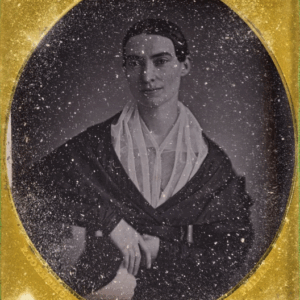JTF (just the facts): A group show containing a total of 20 black-and-white and color photographs, framed in black and matted/unmatted, and hung against white walls in the main gallery space. The show represents a subset of works from the 2018 exhibition Congruencias at FOLA in Buenos Aires (here).
The following photographers have been included in the show, with the number of works on view, their processes, and other details as background:
- Jim Dow: 6 pigment prints, 1981, 1995, 2004, 2014, each sized 20×16 (or reverse) or 30×40 inches, in editions of 25
- Walker Evans: 5 pigment prints, 1935/later, 1936/later, each sized 8×10 inches
- Fernando Paillet: 3 pigment prints, 1922/later, sized 26×30 or 8×10 inches
- Guillermo Srodek-Hart: 6 pigment prints, 2005, 2009, 2010, 2013, 2014, each sized 26×30 or 30×38 inches, in editions of 7+2AP or 5+2AP
(Installation shots below.)
Comments/Context: It’s often a tricky thing for artists to openly acknowledge their influences. While it may be the case that certain predecessors proved to be important in an artist’s development, no artist wants to fall too closely into line with his or her forerunners, if only to ensure that their own artistic voice isn’t inadvertently undermined or drowned out. So the explicit nest of connections that binds together the four photographers in this tightly gathered group show is unusual – the influences, repetitions, and homages are readily apparent, knitting the voices into a brocade of common reverence for crisply seen vernacular interiors.
While the Argentinian photographer Fernando Paillet is the oldest of the four photographers included here, the web of connections initially starts with Walker Evans. Evans’ understated realism was rooted in a deep interest in vernacular America, and his deadpan eye for documenting its structures, advertising, and architecture found ordered resonance in the seemingly ordinary. His landmark photobook American Photographs became a touchstone for Jim Dow as he began his own career in photography, so much so that Dow ended up printing for Evans at the end of Evans’ life. Dow went on to teach photography at the School of the MFA, Boston/Tufts, where Guillermo Srodek-Hart was one of his students, and later his assistant. Srodek-Hart is from Argentina, and his work has drawn him back to that country, where he has documented its own vernacular storefronts and historical surfaces. This interest led him back to Paillet, who had made similar pictures in Argentina (in a reverently deadpan style not unlike Evans’) nearly a century earlier. And so the aesthetic connections and interests between these four come full circle.
Since all of these photographers share pieces of a similar vantage point, the show opts for pairings and comparisons of like subject matter that end up being quite literal, even across decades of time. Dow and Evans both look at seed store interiors, photo studio displays, beds, and barbershops, while Srodek-Hart and Paillet pair up on bakeries, pharmacy interiors, and general stores. Dow and Srodek-Hart provide the bridge between the two, with images behind the gallery desk (in essence, between the two sides of the show and the two nations) that both document overstuffed, densely packed markets.
When seen as direct back and forth comparisons between like imagery, the passing of time becomes more visible, at least in terms of the nuances of how functional spaces are organized and used, and how things both change and remain the same. The seeds move from burlap sacks to wooden drawers and paper packages, the studio portraits evolve from rigidly formal to a dense collage of individuality, and the barber shop now has a TV and a flood of fancy hair products, but the spaces and displays remain quite similar. The bakeries seem the least changed by time, with both versions centered on an ancient hearth with long peels ready for moving loaves in and out. Two pictures from Srodek-Hart get out of this visual lock step, offering us dense visions of bicycle repair tools and a crowd of horse pictures at a cafe, moving further toward the nostalgic eccentricities of vernacular spaces rather than their eternal commonalities.
Since all four photographers worked (or work) with large format cameras, there is a sense of arranged formality to all of these compositions, almost regardless of the specific maker. And while the cacophony of colors and textures was often a seductive visual draw for these photographers, they show a universal sense of understated respect for their subjects. They each find honor in the most humble of commercial enterprises, documenting vanishing traditions with unvarnished clear-eyed vision. So while the connections between the artists are largely invisible and their own motivations are subtly different, the artistic dialogue between the four is unmistakable, reinforcing a compelling sense of common cause across time.
Collector’s POV: Only some of the works in this show are available for purchase. The prints by Walker Evans and Fernando Paillet are not for sale. The prints by Jim Dow are priced at $3000 or $5500 each, based on size. And the prints by Guillermo Srodek-Hart are priced at $1800 or $4500 each, based on size.













Thanks, Loring!